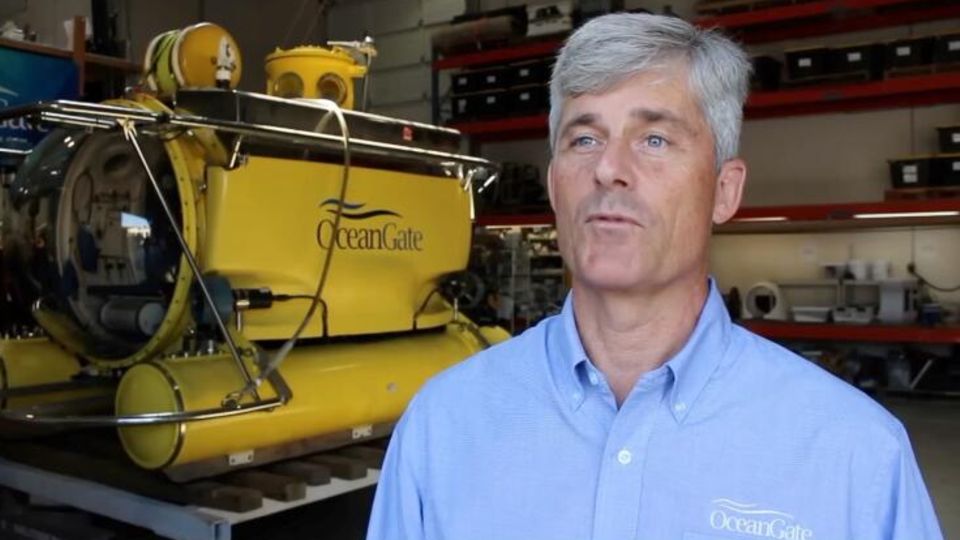Lost submersible
“Titanic”, space, Everest: Why are some people looking for thrills and risks?
The “Titan” was supposed to go down to the wreck of the “Titanic”.
© Woods Hole Oceanographic Institution / AFP
Five adventurers went missing in a submersible on their way to the famous wreck of the “Titanic”. Why do people even embark on such a thrilling adventure – for a lot of money and at high risk?
Deep down to the famous wreck of the “Titanic”, far up Mount Everest, or even into space: while some people get queasy just thinking about it, others are looking for the ultimate thrill. They often pay a lot of money for this and take great risks – like the five people on board the missing submersible “Titan”, which is currently being searched for near the “Titanic” wreck in the North Atlantic.
“It’s also about the feeling of aliveness”
Whether rich people, for whom high ticket prices are not a financial problem, or those who save up the money for years – they all have a “very special inclination to take risks”, they actively seek out this risk and see it as a kick, says the Berlin psychology Professor Birgitta Sticher from the University of Economics and Law (HWR). “It’s also about the feeling of challenge and aliveness. You can call that a personality trait. At the other extreme are people with a very great need for security and control.”
These people took the risk of such ventures with the hope of emerging as “victors”. “For example, if you judged an excursion that you wouldn’t survive it, you wouldn’t go with it. I assume that most people who do something like that also have a certain belief in technology. A certain hope that it will be fine.” In the case of the rich, it might also be that they want to show that they can do something with their money that others cannot.
An entry in the Guinness Book of Records, a souvenir photo or simply personal self-affirmation may also motivate some people. Other people travel out of scientific curiosity and in this way have been contributing to the exploration and measurement of the world and space and thus to scientific progress for centuries.
Gadgets
100 meters deep and very easy to control – the “Nemo” explores the underwater world
While in the past it was mostly explorers, individually or in groups, who often organized and financed their own ventures, the offer of such thrills has moved closer to the mainstream in recent years thanks to the improvement in technical possibilities. For example, there are now several companies that transport people who are not trained astronauts for shorter or longer trips into space, including Blue Origin by Amazon founder Jeff Bezos or SpaceX by Elon Musk.
Demand for excursions to the “Titanic” is high
The British entrepreneur Hamish Harding, who is on board the disappeared submersible “Titan”, had booked a short space trip with Blue Origin last year. According to media reports, these trips cost around 30 million dollars (about 27 million euros). However, manned space travel is still considered technically extremely difficult and risky. Just a few months after Harding’s all-trip, for example, a Blue Origin rocket crashed shortly after launch, luckily with no people on board.
According to initial estimates by the Nepalese Ministry of Tourism, more than 600 mountaineers and local mountain guides and porters climbed Mount Everest, which at around 8849 meters is the highest mountain in the world, this year alone – at least twelve people died this year on this venture for which Mountain climbers have to factor in thousands of dollars.

The demand for excursions to the famous wreck of the “Titanic” is also high: in 2021 his company Oceangate Expeditions, which is behind the disappeared submersible “Titan”, reached the wreck six times and in 2022 seven times, said the company’s boss, Stockton Rush, in the at a lecture last year. In addition to Harding, according to media reports, citing Oceangate, Rush is also one of the five occupants of the submersible. A ticket will cost around $250,000.
The British entrepreneur Harding is involved in the famous “Explorers Club” in New York, in which explorers have been coming together for more than 100 years. “When I saw Hamish at the Global Exploration Summit last week, his excitement about this expedition was palpable. I know he was looking forward to doing research at this site,” wrote the club’s president, Richard Garriott de Cayeux, in an open letter to its members. “We all share the fervent hope that the submersible will be found as soon as possible and that the crew is safe.”


